
How do we maximize the flow of value delivery? For example, how do we determine the potential flow of Minimum Business Increment (MBI) delivery in a period such as a quarter? We conduct Look Ahead Value Flow Planning.
The Value Flow Planning (VFP) event in Disciplined Agile is focused on identifying and managing dependencies, split across two days. In the DAVSC course, the example used centers around a dependency board and a teams-of-teams scenario.
The Value Flow Planning (VFP) event accomplishes the following:
- Get clarity on the sequence of work
- Adjust as necessary
- Identify dependencies
- Identify improvements
- Create visibility
Look Ahead Value Flow Planning
I want to introduce you to a different approach to value flow planning that I call “MBI Tetris.” Have you ever played the classic game Tetris? The game where geometric shapes drop, and as the player, you rotate and move them laterally to form a complete row. Inspired by the game, MBI Tetris is an approach to moving MBIs (and MVPs) around a planning board to determine the maximum potential flow of value.
Let’s take a look at the Idealized Value Stream (IVS) that I stepped through in last week’s article. Figure 1 is the customized version of the IVS that we created to view all three value streams – Operational, Development, and Supporting. This graphic shows how an idea flows through the business side of the IVS is held in the intake queue when it is ready for implementation and then pulled, through implementation, ending with value delivery to a customer.
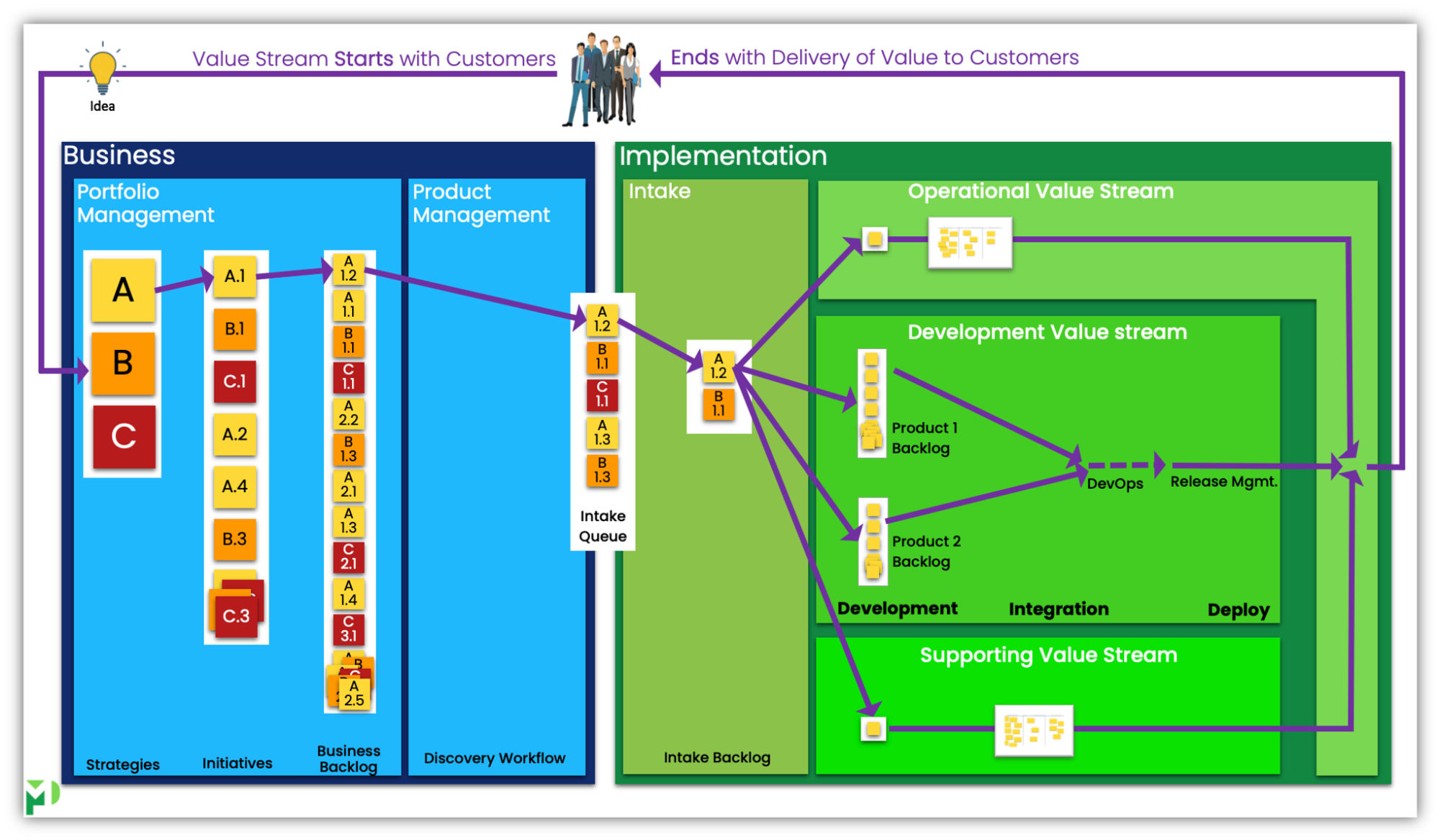
Figure 1: Idealized Value Stream
I like this visual. Even better, when I train or coach on the IVS, I use several of these visuals showing a range of MBIs (complex like figure 1 and a degree of lesser less complexity – such as a single team enhancing a single product). But why do we need an intake queue, and what is the purpose of the intake backlog?
Figure 2 focuses on where we pull work from the intake queue into the intake backlog when the people that will complete the value-adding activities can do so. How do we plan for this?
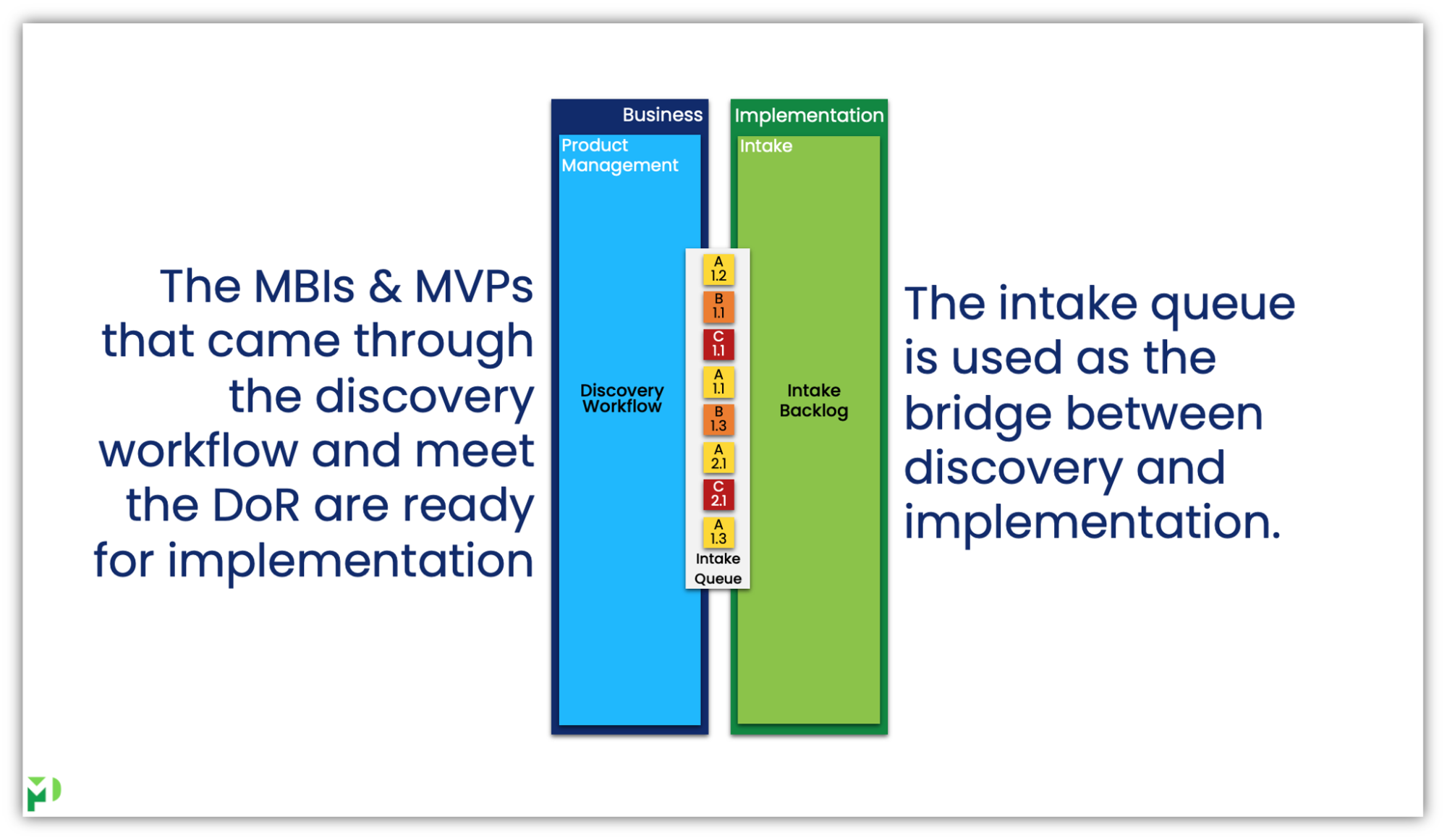
Figure 2: Intake Queue – the bridge between discovery and delivery
A few thoughts on some of the pre-conditions for this event:
- MBIs in the queue meet the Definition of Ready (DoR)
- MBIs in the queue have been ordered based on business value, cost of delay, etc.
- Features in the MBI sized by the teams/people doing the work
- Forecast of the MBI duration
- Dependencies inside the value stream and outside identified
- The forecasted capacity of the Teams in the Development Value Stream as well as those in Operational and Supporting needed for each MBI
Let’s look at how we use MBI Tetris in look-ahead value flow planning for the coming quarter. Figure 3 is the setup. I have the Intake Queue with MBIs that meet the Definition of Ready and are ready for implementation. This example is a direct-to-consumer product sales value stream. There are five products shown, each with a delivery team responsible for enhancing them.
Please note, in the next set of figures, for simplicity and sizing of the graphics. I am going to demonstrate MBI Tetris using the Development Value Stream. In practice, all value streams (Operational, Development, and Supporting) would be part of this planning.
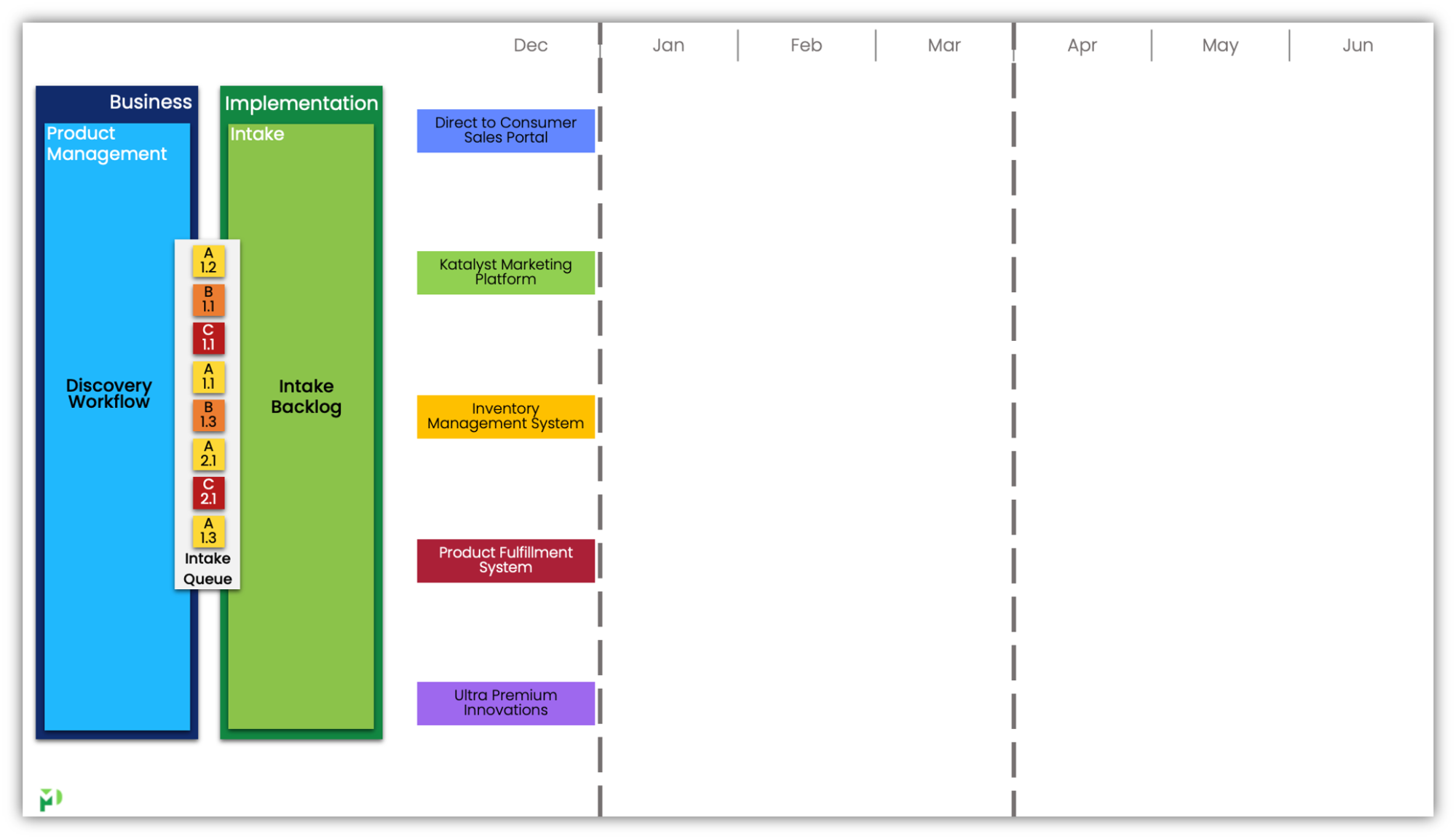
Figure 3: Intake Queue and Value Flow Planning Board
Now we get into why I call this MBI Tetris – we look at MBIs & MVPs in the queue, the teams & individuals that would take on the completion of value-adding activities, their capacity (availability), and dependencies. We pull the items from the queue onto the planning board and determine our options for maximizing flow. Figure 4 is our start. We pull MBI A1.1 onto the board.
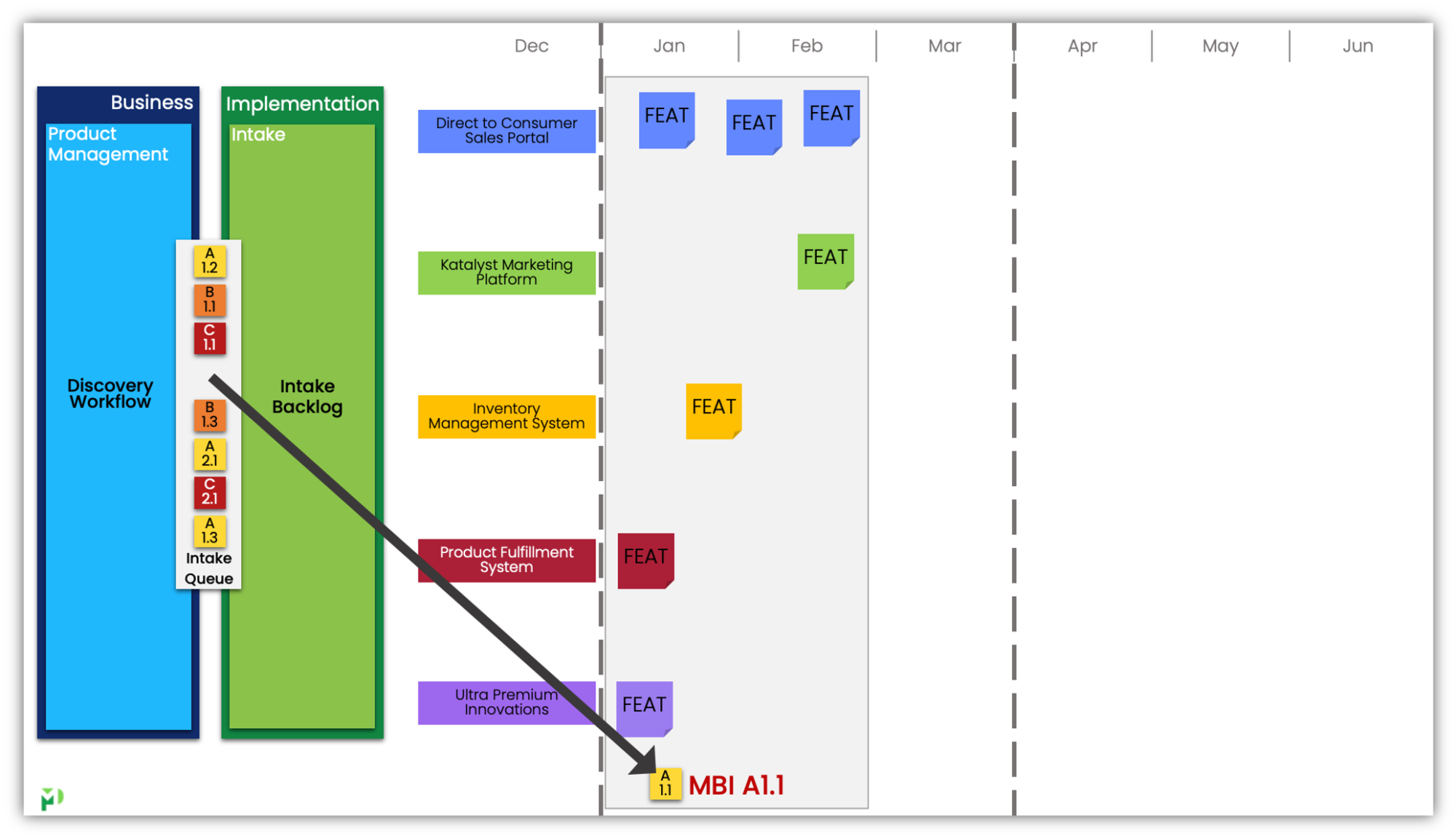
Figure 4: Begin pulling MBIs & MVPs onto the planning board
Reviewing the remaining items in the queue, we pull the next item onto the planning board. Figure 5 shows MBI A1.2 pulled on the board. This MBI has enhancements in two of the products in this value stream. It has been placed on top of MBI A1.1; this is one of the most significant differences and value propositions of this approach.
The delivery teams who complete the value-adding activities of an MBI are not banded together for the entire duration of the MBI. Therefore, we look at the sequencing of the work to be done across all of the teams delivering each MBI and identify options. In the example of MBI A1.1, the Product Fulfillment System team and Ultra Premium Innovations team start and finish their contribution to the MBI and can move on to other work. They are not “On-the-MBI,” they do their part, and we see what they could do next.
In the example of MBI A1.1, the positioning of the Katalyst Marketing Platform team’s enhancement is further out in the timeline. The feature that this team will deliver has a dependence on an enhancement in the Direct to Consumer Portal team. There is available capacity that we can fill in (I cover this below in figure 7).
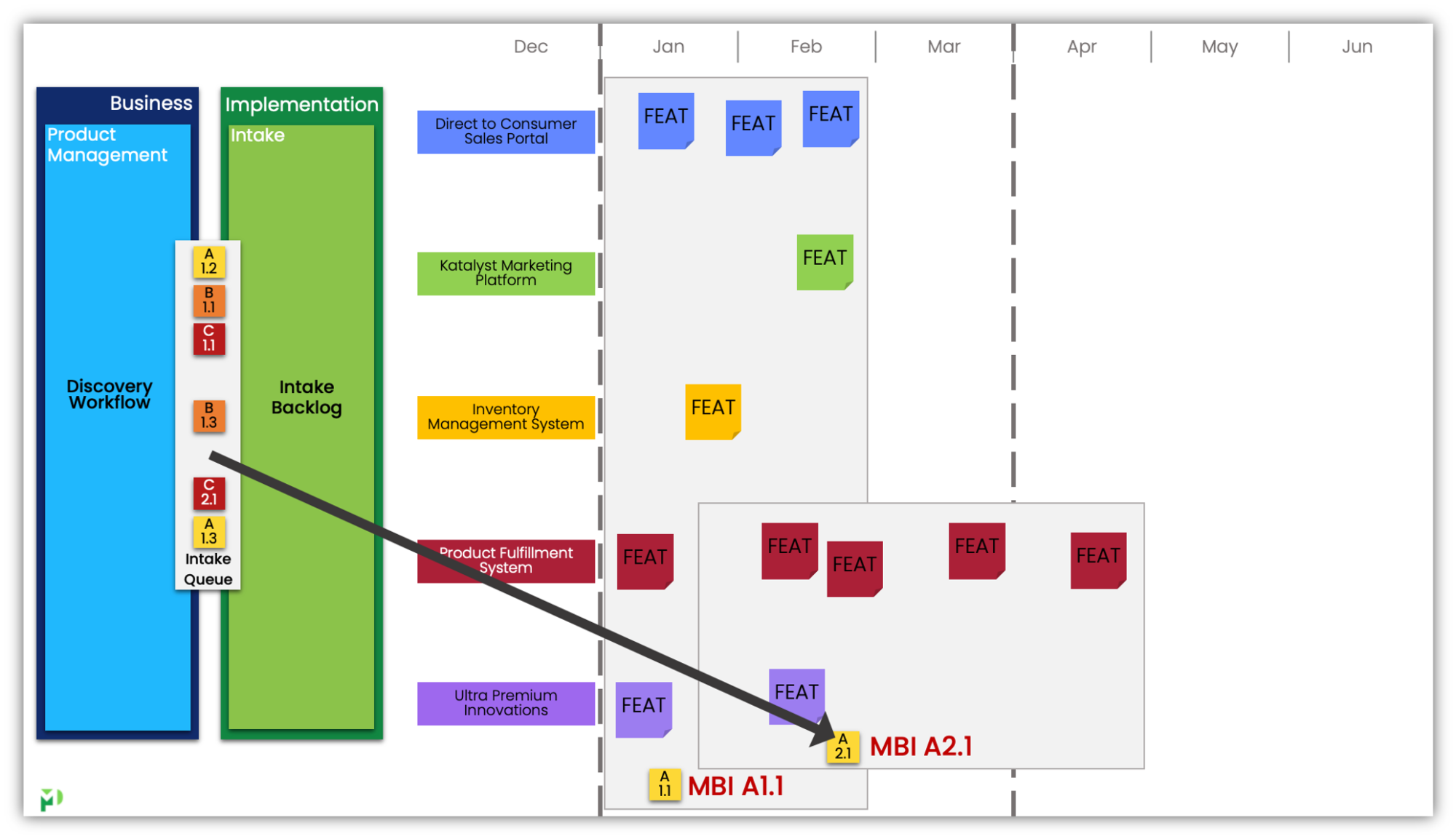
Figure 5: Pulling the next MBIs onto the planning board and fitting it in
This approach to planning and looking at how we can arrange value delivery comes to life with visualization. Create a graphic that conveys the work to be done, and the forecasted period enables us to look at our flow in a very different way. For example, figure 6 is a comparison of placing two MBIs on the board. There is no right or wrong way – both instances of the planning board have space to work around and continue to “fill in.”
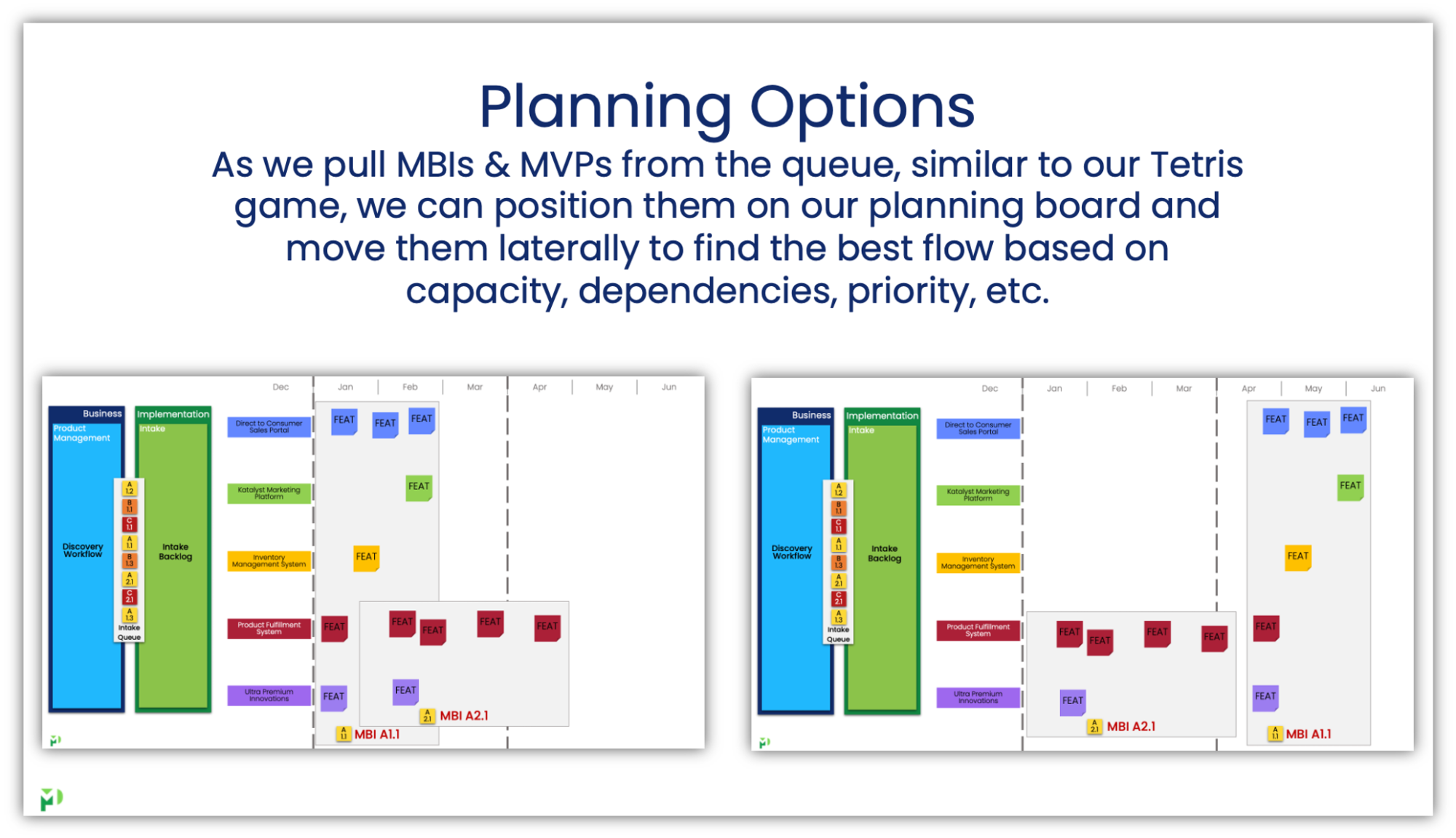
Figure 6: Comparison of two MBIs placement on the planning board
The result of MBI Tetris (Look Ahead Value Flow Planning) for a quarter is represented in figure 7. Here we pulled the items from the queue onto the planning board and identified a plan to maximize the flow of value.
Please note, not everything of value is going to be an MBI. In this example, the Katalyst Marketing Platform team and the Ultra Premium Innovations team had capacity available for this quarter. Since there were not any MBIs that they could pull in that would fit in the remaining capacity, in both instances, the respective Product Owners identified stories that provide value to customers but are not part of an MBI. These stories are not part of a new feature or capability; they are minor enhancements to existing functionality.
This approach is akin to Steven Covey’s big rocks and small rocks. The MBIs are the big rocks, and we are filling in the space around them with small rocks, in this case, stories. Although this scope of work still flows through the intake process, it does not require flowing through the discovery workflow.
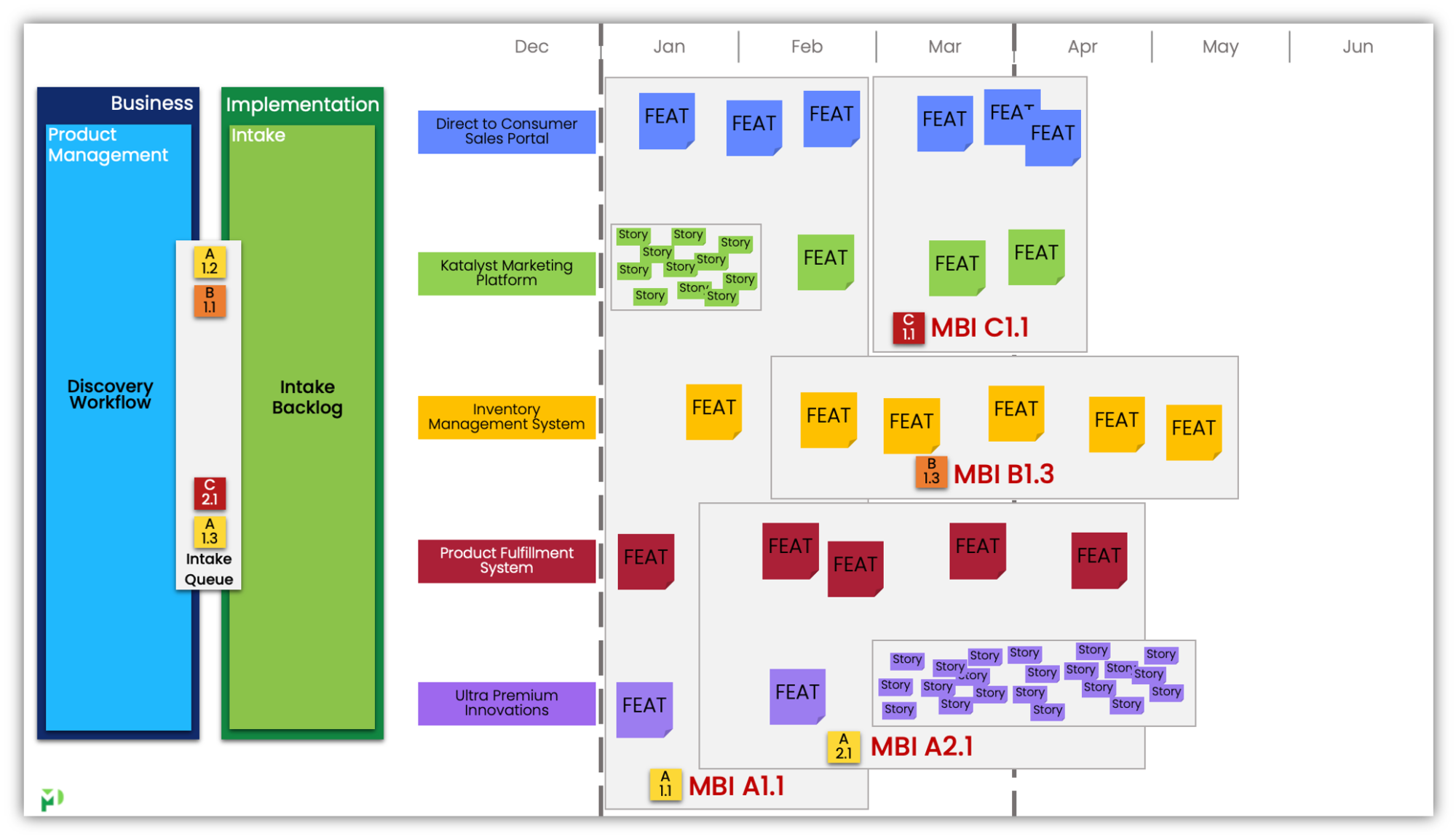
Figure 7: Look Ahead Value Flow Planning for the quarter
This approach visualizes the possibilities and enables moving items in the intake queue to plan for delivery.
For additional information, I did a LinkedIn Live stream on this topic: Value Flow Planning – MBI Tetris.

We help implement lean and agile methodologies to streamline processes in a context-sensitive manner.
Quick Links
Latest Posts
All Things Value Delivery Management – Value Flow Factor 1: Small Items
Is the size of work the minimum scope to provide value a customer can consume? In most cases, the answer is no. However, whether it is a project, business case, charter, work package, epic, etc., we can almost always identify a minimum business increment. Relentless...
Project Manager to Value Delivery Manager
Here we have a common problem. The “agile team” comprises a product owner, team coach, and team members. Far too often, I hear something like, “there are no project managers in agile.” Agile teams are empowered to make decisions and determine how to get the work done....
